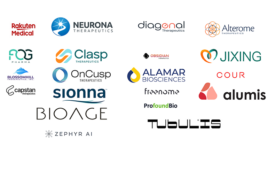
Combating glioblastoma remains a major challenge due the complex nature of these tumors, the inability of drugs to penetrate the brain tissue, and lack of correlation between animal models and the human condition.
In a novel first-in-human phase 0 clinical trial study led by Dr. Nader Sanai at Barrow Neurological Institute, in collaboration with Karmanos Cancer Institute and Translational Genomics Institute, a drug called AZD1775 was shown to penetrate the brain tumor providing first evidence of clinically-relevant activity of this drug in human glioblastoma.
This study was published in August 2018 issue of the Clinical Cancer Research journal. The study not only highlights differences between preclinical animal models and human studies but also confirms the utility of phase 0 trials as a part of an accelerated paradigm for evaluating drugs for glioblastoma patients.
Sanai is the director of the Ivy Brain Tumor Center, which was founded to provide new treatment avenues and hope for glioblastoma patients. The Ivy Brain Tumor Center, which is located at Barrow, is home to the largest phase 0 clinical trials program in the world for brain tumor patients. The phase 0 trial design keeps in mind the importance of time for brain tumor patient and spares them from investing precious time, effort and energy in therapies that do not work.
“Within days of surgery, we identify which investigational therapies have successfully penetrated the patient’s tumor and whether these agents have also effectively modulated the tumor’s biology. Once the experimental regimen proves its ability to reach its target and undermine the tumor’s core programming, then the patient is ‘graduated’ to this chosen regimen at maximum therapeutic doses” says Sanai.
SOURCE: St. Joseph’s Hospital and Medical Center
Filed Under: Oncology




